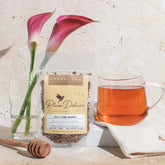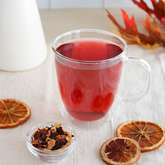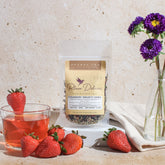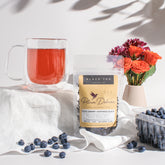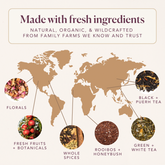A quick taste testing tea party of three different oolongs proved that there are some noticeable and delicious distinctions that make oolong unique. We're all tea lovers here, so I'll use my observations of other types of tea for comparison.

How is Oolong Tea Made?
Oolong tea is made from the same camellia sinensis (or tea plant) as pu-ehr, black, green, and white teas. The processing of the leaves gives each of these teas a distinctly different taste. A white tea is dried immediately after harvesting and ends up with a very delicate, light flavor, whereas a black tea is oxidized, giving it a much stronger flavor. Oolong falls somewhere in the middle depending on the amount of oxidation during processing, and also has many of the same health benefits as the others of the same plant.
What Does Oolong Tea Taste Like?
If you're a black tea drinker, you know that black teas are robust, with a strong plant or tea flavor that can support stronger additional flavors. However, they can also have a little bit of a bite at the end of the sip. Black teas are easy to oversteep and can get bitter if left in the pot too long.
On the other hand, a green tea drinker will know that many green teas are lighter with a more “grassy” flavor. Green teas also offer a less strong “tea plant” flavor than black teas and so create a great vessel for additional “delicate” flavors that might be overpowered by a black tea.
Because of the differences in oxidation levels, one oolong tea can taste very different from another. However, we tried Plum Deluxe's Peaches and Cream oolong tea, Toasted Nut Brûlée oolong tea, and Currant Conversation oolong tea and came up with some similarities.

As a black tea drinker, the strong flavors of all the oolongs were like a welcome friend. However, none of the oolongs had even a hint of the bitter finish of a black tea. We even left some Currant Conversation in the pot for way too long, and the bitterness was nothing compared to an oversteeped black tea. Instead, each oolong has a smooth and pleasant finish even without adding any cream or sugar. In fact, I didn't feel the need to add sugar or milk to any of the oolongs we sampled!
We also found the oolong teas to be an excellent base for each of their additional flavors. Sometimes a black tea can overpower the additional flavors, and a green tea can leave you wondering if there was tea in it at all. Not so with oolong. Instead, there was an excellent balance with each of the flavors hitting your taste buds at a different time.
The bottom line is, if you were like me and hadn't tried it because you didn't know what oolong would taste like, you need to try one. I once thought that oolong belonged to the same family as rooibos tea, of which I am not a fan. Oh, boy, was I wrong! Oolong is a darker tea that is full of flavor and smooth on the finish. If you like black teas, it's very likely you will like oolong teas. Try it and you just may find your new favorite blend.
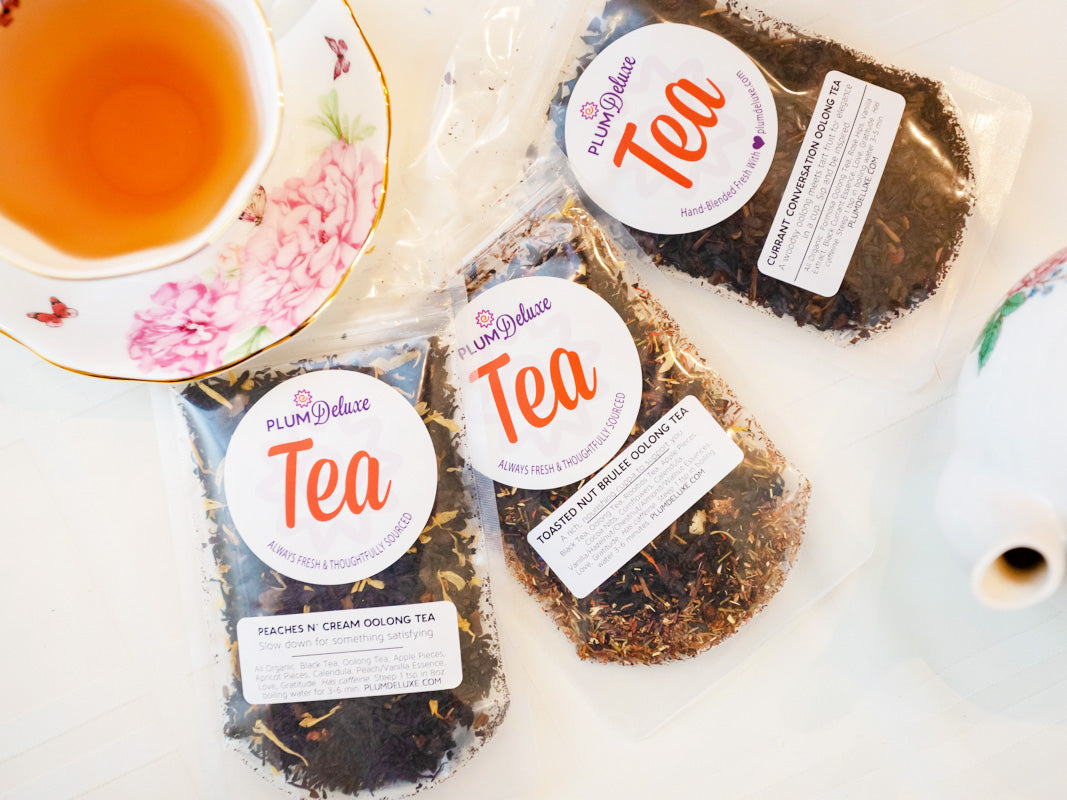
![Snow Day Sips Winter Tea Variety Pack [6-Pack of Flavors]](http://www.plumdeluxe.com/cdn/shop/files/holidayTeaVarietyPack_3.png?v=1766043158&width=165)
![Winter Tea Variety Pack [6-Pack Variety of Flavors]](http://www.plumdeluxe.com/cdn/shop/files/2.03-1080x1080-PlumDeluxe-IT-205020.png?v=1762440068&width=165)


